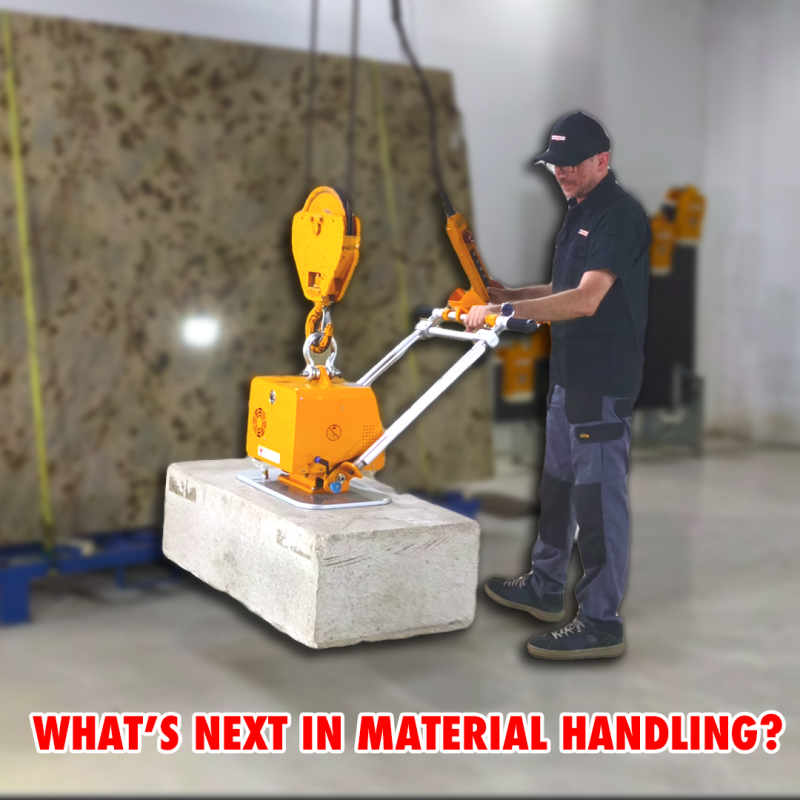



As we move into 2025, advancements in automation, robotics, and smart systems are redefining how goods are moved, stored, and managed. Highlights key material handling equipment, and examines use cases across industries—ensuring you stay ahead in the evolving material handling industry.
Warehouse automation has transformed from a luxury into a necessity for companies seeking to optimize throughput, reduce labor costs, and enhance safety. Modern facilities leverage a combination of robots, automated guided vehicles (AGVs), and intelligent control systems to orchestrate the end-to-end flow of goods. In this dynamic landscape, material-handling equipment becomes the backbone of productivity, enabling businesses to:
Accelerate inbound receiving and put-away processes
Streamline order picking and packing
Optimize outbound shipping and loading
Minimize human error and workplace injuries
By integrating real-time data analytics and AI-driven decision making, organizations can predict demand surges, balance workloads, and continuously refine their material handling strategies. Indeed, “Material handling equipment: the driving force behind the warehouse” underscores how equipment choice directly impacts overall operational efficiency.
Robotic arms combined with AGVs are revolutionizing tasks that were once labor-intensive. From palletizing heavy loads to precise box picking, collaborative robots (“cobots”) work alongside human operators, offering:
Flexibility for mixed-SKU facilities
Scalability to ramp up during peak seasons
Consistency in repetitive motions
These systems often integrate vision sensors and machine learning, enabling them to adapt to variations in product size, shape, and packaging.
Vacuum lifters have become indispensable for handling smooth, non-porous surfaces like glass and stone. Thanks to advances in suction technology, they deliver:
High load capacities with minimal physical strain
Quick attachment/detachment cycles
Enhanced safety through pressure-sensor monitoring
For versatile performance across different materials, consider “The vacuum lifting equipment is extremely versatile,” which excels in lifting, rotating, and tilting heavy slabs. These solutions are often paired with slab lifters in the stone and construction sectors to ensure precise placement.
Scissor lifters combine the gripping action of a clamp with precise vertical motion, making them ideal for lifting steel plates, frames, and other heavy loads. To learn why they stand out, explore “Why Choose the Aardwolf Scissor Clamp Lifter?”. Similarly, for handling stone slabs, “A high-quality slab lifters” provide exceptional load stability and smooth operation.
Securing irregular or heavy loads during transit is critical. Modern ratchet tie down traps feature:
High-strength webbing with corrosion-resistant hardware
Built-in breakaway protection for overload scenarios
Quick-release mechanisms for faster unloading
For best practices, check out “comprehensive ratchet tie down strap solutions”.
Forklift attachments have evolved beyond simple forks. Contemporary lifting equipment includes booms that convert standard forklifts into versatile cranes. Discover innovative designs in “Forklift Boom Design”, which extends reach and allows safe lifting of awkward loads.
Portable gantry cranes deliver flexible lifting solutions across workstations. Offering easy relocation and fast setup, they’re favored for shop-floor applications. Learn about “the key advantages of portable gantry cranes” to see how they enhance workflow adaptability.
Handling massive stone blocks and slabs demands specialized gear. Transport frames integrate seamlessly with forklifts and cranes—see “Key Features of Aardwolf Transport Frames” for details on secure, damage-free movement. Sustainable best practices are showcased in “Stone Transport Redefined”, while process optimizations can be found under “Optimizing Logistics for Stone Transport”. When precision gripping is required, the “High Quality Stone Lifting Clamp” and “How Block Lifting Clamps Improve Efficiency in Stone Processing” offer robust solutions.
Delicate glass panels benefit from suction cup lifters, which minimize surface stress. For reliable performance, the “glass lifting” system combines ergonomic design with advanced vacuum controls. To dive deeper into suction-cup selection, see “Applications of Suction Cups, Suction Cups for Glass Handling”.
Choosing the optimal machinery is a strategic decision. Factors to weigh include:
Load characteristics (weight, shape, fragility)
Facility layout and available aisle widths
Operational budget and total cost of ownership
After-sales support and service availability
For a step-by-step guide, consult “Selecting the correct Material Handling Equipment”. To understand the full spectrum of options in the handling material industry, review “in handling material industry”.
Regular inspection and lubrication keep jib cranes operating safely. For essential maintenance tips, read “ensure your jib cranes are maintained in an excellent condition”.
To extend the life of transport frames, implement:
Scheduled weld inspections
Hydraulic system checks (if equipped)
Surface rust-proofing and repainting
Understanding “a backbone of material handling equipment” underscores why preventive maintenance pays dividends in uptime.
IoT and Predictive Maintenance: Sensors will provide continuous health monitoring of conveyors, cranes, and lifters—enabling preemptive repairs.
AI-Driven Warehouse Control: Machine-learning algorithms will optimize pick-paths, stock rotation, and resource allocation in real time.
Sustainable Material Handling: Electrification of tugger trains and forklift fleets, combined with lightweight composite equipment, will reduce carbon footprints.
Augmented Reality (AR) Assistance: AR headsets will guide workers during complex lifts, showing load weights, center-of-gravity data, and safety clearances.
Modular Automation Cells: Plug-and-play robotic stations will allow rapid reconfiguration for changing product lines and seasonal spikes.
By embracing these trends, material handling companies can transform their warehouses into intelligent, resilient hubs—delivering faster, safer, and greener operations.
By staying informed on these warehouse automation trends and selecting the right material handling equipment, you’ll be well-positioned to lead in 2025’s competitive logistics landscape.
Sign up to receive the latest info on new Aardwolf products, special offers and more.
By signing up you agree to receive emails from Aardwolf with news, special offers, promotions and other information. You can unsubscribe at any time.